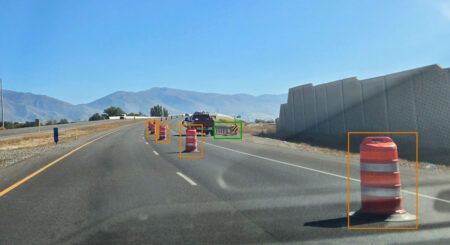The New York State Department of Transportation (NYSDOT) is introducing ramp metering technology on Interstate 287 to improve traffic flow on the notoriously congested highway, and other arterial roads in Rockland and Westchester.
The agency has revealed the introduction of the traffic signal-based merging system during an open house event about the Lower Hudson Transit Link, the region-wide program that includes a new bus system. Widely used on other key highways across the USA, ramp metering is an important component of the NYSDOT’s Integrated Corridor Management (ICM) plan, which includes additional technology and real-time traffic information to better manage I-87/I-287, as well as State Routes 9, 119 and 59. As part of the project, SR 59 will also receive upgrades to intersections, sidewalks, and crosswalks.
The agency’s ICM system uses technology and real-time traffic information to manage transportation networks with greater efficiency. The ICM deployment will result in smoother traffic flow, more consistent speeds, more reliable travel times, and safer travel conditions for drivers. The technology implemented on both I-287/I-87 and the arterial roadways, such as ramp meters with bus queue jumps, real-time travel information, and Transit Signal Priority (TSP), will provide benefits to buses, automobiles, and trucks.
The ramp metering system will be installed at 13 on-ramps to I-287/I-87. Sensors installed on the highway near the on-ramps will trigger the ramp metering during heavy traffic periods. When operating, every vehicle entering the on-ramp will be required to stop at a red traffic signal and wait for a green signal to merge. Additional sensors will also be placed at the entrance of the on-ramp to ensure cars to do not back up onto local roads.
While all entry ramps between Suffern and White Plains were initially considered for metering, the 13 were selected based on a number of criteria, including ramp length, available space for ramp widening, number of cars entering the ramp, cost, and the anticipated congestion alleviation benefits. At the eastbound and westbound entry ramps at Interchange 12, the entrances will be two lanes, each controlled by a signal, with one of the lanes giving preference to buses.
“Ramp metering will improve safety and allow for a greater number of drivers to travel more quickly on the highway,” said Michael Schaefer, NYSDOT’s regional design engineer. “It will give the traffic entering a better and safer spacing, and be able to access the highway in a more appropriate manner.”




